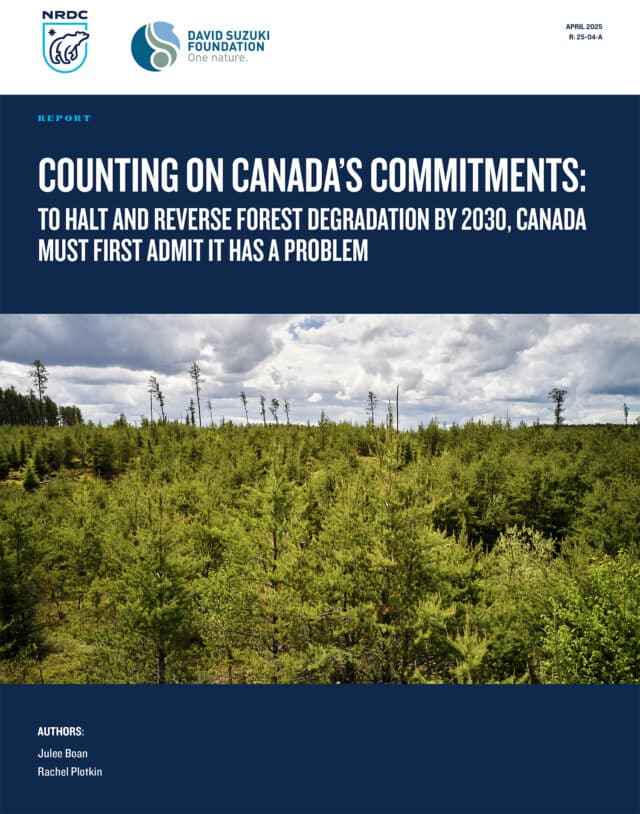Counting on Canada’s Commitments: To halt and reverse forest degradation by 2030, Canada must first admit it has a problem
Published by:
David Suzuki Foundation and partners
Authored by:
Rachel Plotkin,
Julee Boan
Partners:
Natural Resources Defense Council (NRDC)
Environmental rights Boreal forest
A new report by the National Resources Defense Council and the David Suzuki Foundation shows that despite Canada’s claims that its laws protect the ecological integrity of its forests, forest degradation has occurred across Canada with insufficient government acknowledgement, scrutiny or recourse.
Addressing forest degradation is essential for Canada to fulfill its commitments to the Paris Climate Agreement (2015), Kunming-Montreal Global Biodiversity Framework (2022) and the Global Stocktake (2023). However, like many other Global North nations, Canada has not publicly recognized that forest degradation is an issue within its own borders. Instead, government agencies and the forestry industry focus on deforestation — the conversion of forests to non-forested areas like cities or farmland — and claim victory for the limited amount of deforestation occurring under their watch. This approach gives credit for simply maintaining designated forest lands as “forest,” and ignores the quality of those forest ecosystems. Many global commitments, including halting biodiversity loss, reversing land degradation and limiting climate change, depend upon retaining forests with high ecological integrity. Yet the scale and degree of forest modification remain poorly quantified and mapped.
Without fundamental changes in forest management’s practices, incentives and policy structures, forest degradation will continue to occur — unchecked and largely unmonitored — leaving forests that are far less resilient and biodiverse for future generations. This will undermine Canada’s ability to meet its biodiversity and climate change commitments.
